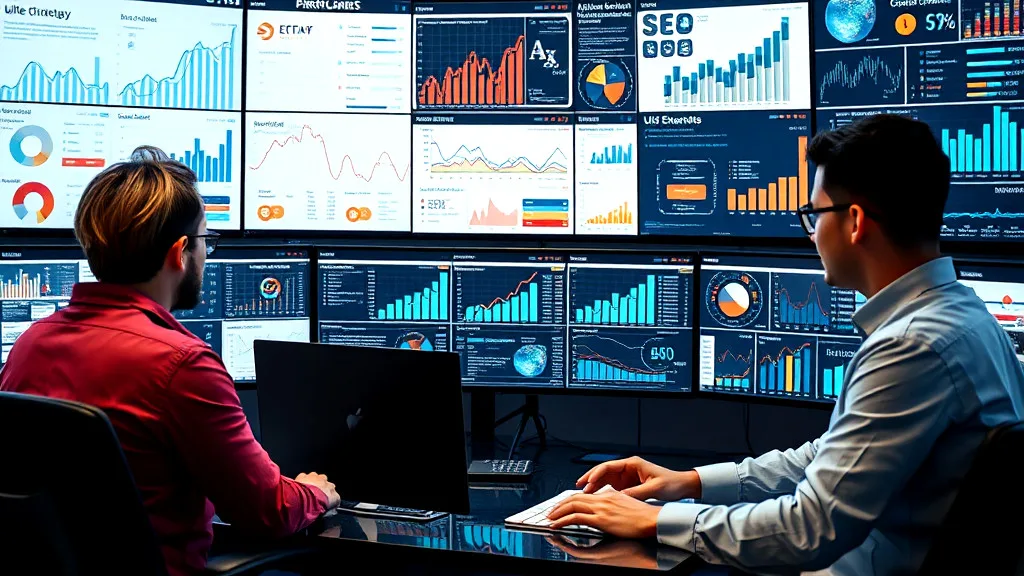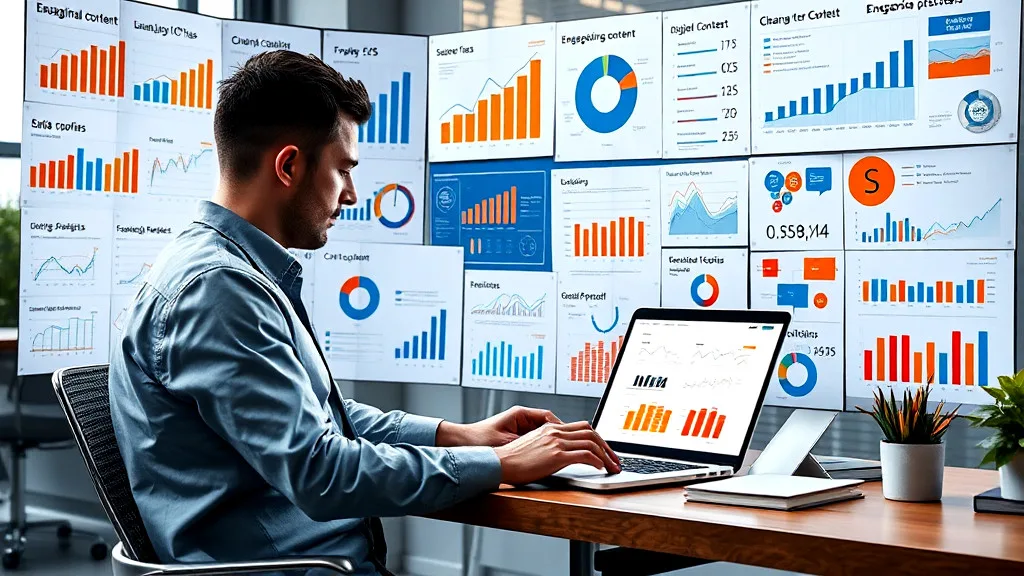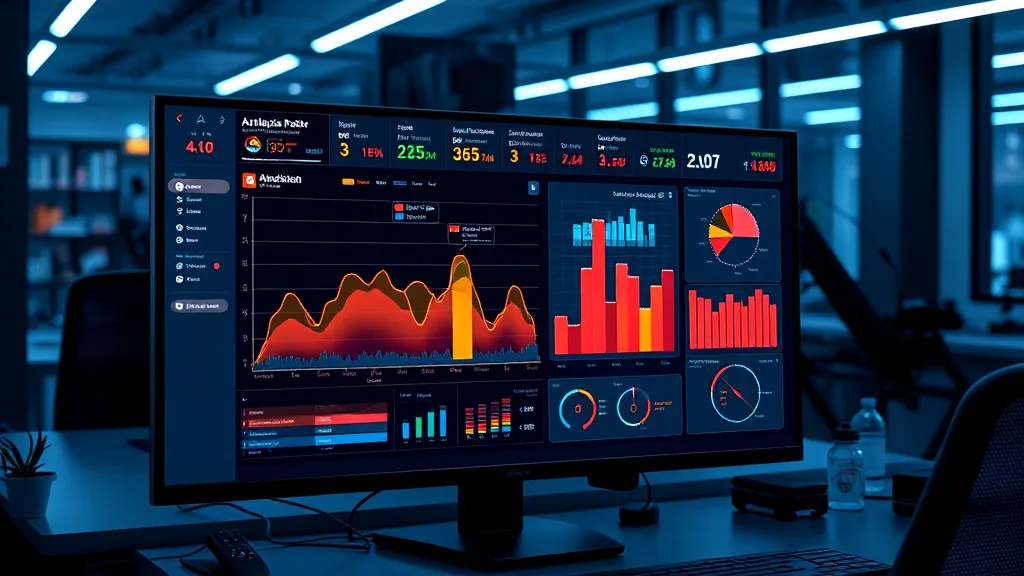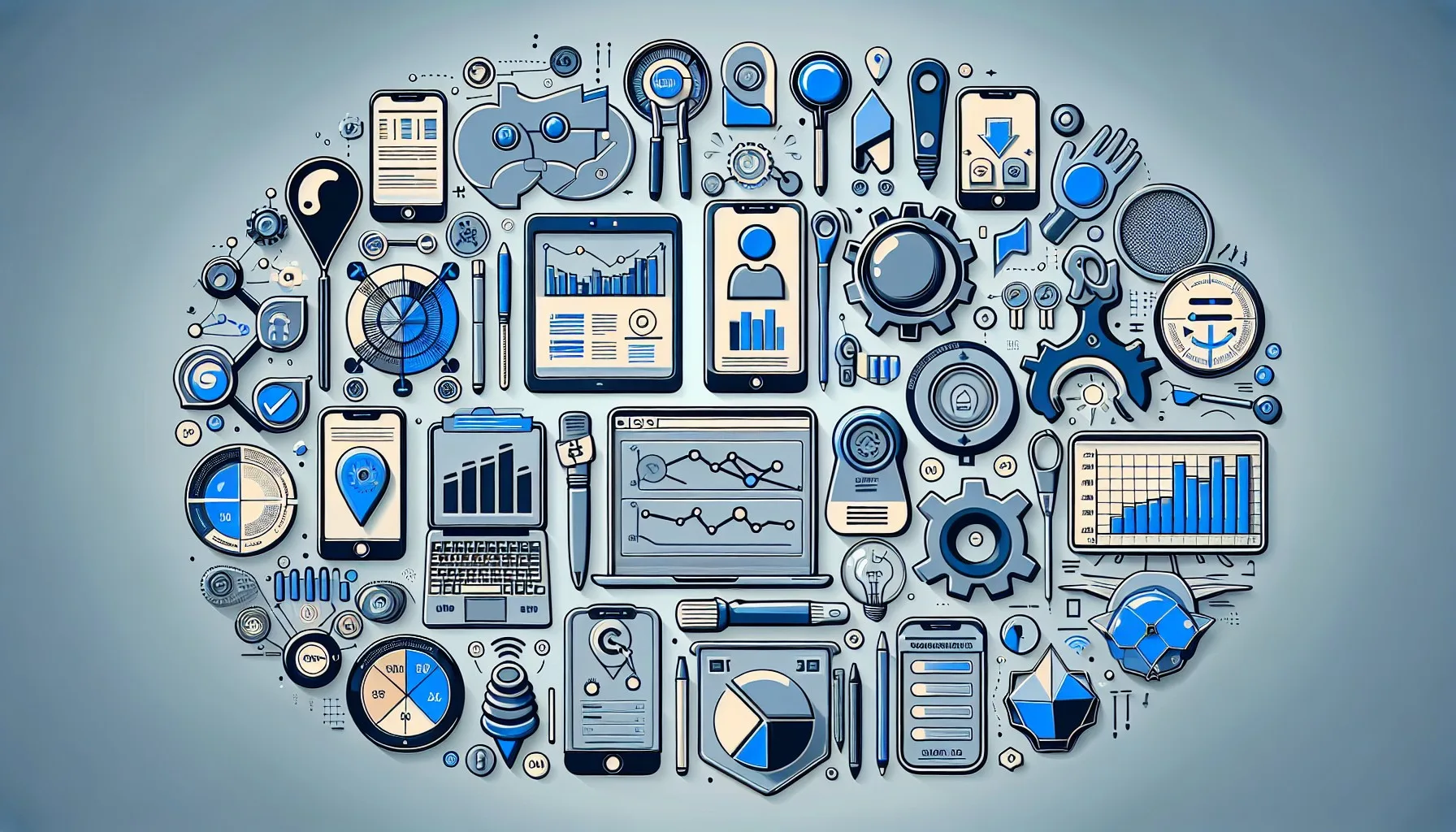Ever wonder why some businesses seem to skyrocket while others stall?
It often boils down to understanding the funnel conversion rate. This magical metric shows us how many folks actually complete actions we want, like buying stuff or signing up.
It’s like a secret sauce that tells us how well our marketing and sales funnel is working.
Picture this: a potential customer enters the sales funnel, curious about what we offer. Each step nudges them closer to making a decision.
With a “sales funnel calculator,” we can easily see where people get stuck and what needs tweaking. By tracking conversion funnel rates, we can aim for a good funnel conversion.
It’s a game-changer in boosting our sales conversion rate.
Key Takeaways
A funnel conversion rate measures how many users complete desired actions in a funnel.
Knowing a good funnel conversion boosts our sales conversion rate significantly.
Different stages help guide potential customers to make a purchase or sign-up.
A sales funnel calculator helps us find where users drop off and need more attention.
Strategies like simplifying processes and using social proof can enhance conversion rates.

Definition of Funnel Conversion Rate
Understanding the concept of a funnel conversion rate helps us grasp how effectively users complete desired actions in our sales funnel.
This metric highlights the performance of each stage, giving us insights into areas needing optimization. Think of it like a detective solving a mystery, identifying where leads drop off and why.
From there, we can tweak strategies to guide more users through each stage.
Using a conversion rate calculator can streamline this process, making it easier to pinpoint bottlenecks.
A good funnel conversion not just boosts our sales but enhances overall user experience. Engaging content, clear CTAs, and social proof are crucial.

Importance in Digital Marketing
The significance of understanding funnel conversion rates in digital marketing cannot be overstated.
They offer a direct glimpse into our sales funnel’s effectiveness, revealing where potential customers might lose interest.
By scrutinizing these rates, we can fine-tune our strategies, ensuring smoother transitions through each stage.
It’s like being a gardener, nurturing every lead to bloom into a customer.
This means more revenue, happier users, and fewer missed opportunities. Investing effort in improving our sales funnel conversion can turn the tide in our favor.
Are we ready to measure up? A conversion rate calculator can help us see where we’re thriving and where we need to dig deeper.

Key Stages of a Sales Funnel
Navigating through the stages of a sales funnel is like steering a ship through uncharted waters. At the start, in the Awareness Stage, potential leads first notice us.
They catch a glimpse of what we offer. Next, the Interest Stage hooks them deeper. They nibble on our content, showing signs of interest.
As the journey progresses, the Consideration Stage has them weighing options. They start comparing us to others. Finally, in the Action Stage, they make a move and convert.
Boosting our funnel conversion rate here feels like striking gold. Tiffany Ruder shares insights on this journey here.

Awareness Stage
In the initial phase, potential leads first notice us through various channels. It’s like planting seeds, hoping they sprout into interest.
The funnel conversion rate tells us how many of these seeds grow into full-fledged customers. A good funnel conversion at this point means we’re catching eyes effectively.
If we see a low conversion funnel rate, we might need to adjust our approach. Maybe our message isn’t clear, or our visibility is lacking.
Let’s make sure we’re watering those seeds properly. A sales funnel calculator can help us gauge our efforts, ensuring we’re on the right path.
Interest Stage
When our leads engage with our content, the funnel conversion rate becomes crucial. Here, they show a deeper interest, almost like peeking into a neighbor’s backyard.
We see them nibbling on our offers, exploring what we present. Are they ready to move forward? It’s a question of enticing them enough to take that next step.
If our sales funnel conversion isn’t strong here, tweaks are needed. Maybe it’s a fresh coat of paint on our call-to-actions or a sprinkle of social proof.
Marketo’s insights on top conversion rates by channel can provide inspiration here.
Consideration Stage
We find ourselves in the phase where leads are actively evaluating their choices. They’re not just window shopping; they’re holding up our offerings against others.
Our funnel conversion rate here becomes a beacon. It guides us in tailoring offers that hit the sweet spot. Whether it’s a limited-time discount or a compelling testimonial, these tools can sway their decision.
For example, FastSpring has a great guide on converting trial users into paying customers on their blog.
If our sales conversion rate dips, it’s time for a new strategy. Perhaps a more personalized approach or a tweak in messaging is needed.
Action Stage
As we step into the decision moment, the funnel conversion rate defines our success. This is where the magic unfolds, turning curiosity into commitment.
We can almost hear the ‘cha-ching’ as users click that buy button. But if the numbers aren’t singing, tweaks are in order.
It might be a smoother checkout or a dazzling discount that does the trick. A well-crafted journey ensures a good funnel conversion and leaves both parties smiling.
Our trusty sales funnel calculator keeps us informed of every twist and turn, ensuring no surprises.
Let’s aim for numbers that make us want to pop the champagne!
How to Calculate Conversion Rates
Figuring out how the funnel conversion rate works involves a straightforward approach.
Picture this: you take the number of users who completed the desired action—be it a purchase or sign-up—and divide it by the total number of users who entered the funnel.
Multiply by 100, and voilà, you have your conversion rate! A good funnel conversion hinges on understanding these numbers.
Want to make it even easier?
Check out this calculator that simplifies the math, ensuring no brain strain. This tool is like having a trusty sidekick for your digital adventures and sales success.

Formula for Conversion Rate
Calculating the rate of conversion in our funnel involves a simple process.
We take the number of users who completed the desired action and divide it by the total number of users who entered the funnel, then multiply by 100.
This gives us our conversion rate, a key indicator of our funnel’s effectiveness. If our conversion rates aren’t hitting the mark, there might be room for improvement.
Perhaps a tweak in our messaging or an adjustment in our offers can pave the way for a good funnel conversion.
Let’s keep refining and testing, ensuring every visitor takes that leap with us.
Using a Conversion Rate Calculator
Exploring how we calculate conversion rates can be as simple as pie.
Now, when we want to analyze each stage of our funnel, a calculator becomes our best friend. It’s like having a cheat sheet for understanding every twist and turn.
A well-placed tweak here and there can make our funnel conversion rates shoot up like a rocket. Plus, there’s a handy tool that helps us stay on track.
With it, we easily pinpoint where improvements are needed. It’s all about knowing our numbers and making informed decisions that guide our strategies to success.
Average Funnel Conversion Rates
Exploring the average rates of funnel conversion is like peeking behind the curtain of success. Different industries tell different tales.
In e-commerce, we see conversion rates dance between 0.6% to 5.5%. SaaS struts its stuff with higher averages, hitting around 7%.
So, why the wide range? It boils all the way to user experience, purchase complexity, and effective CTAs.
Aiming for better numbers?
Simplify, optimize, and sprinkle in some social proof.
Curious for more?
Unbounce shares intriguing insights on conversion rates here. Remember, a strong funnel conversion rate is the key to unlocking greater success!
Factors Influencing Conversion Rates
Understanding what impacts the funnel conversion rate provides insights into improving user journeys. Several things come into play, like the simplicity of the purchase process.
If users face a maze, they’re likely to bail. Effective calls-to-action act as signposts, guiding users straight to the finish line.
And let’s not forget social proof; reviews can turn skeptics into believers.
It’s like building a bridge of trust with each click.
Sales funnel conversion success often hinges on these factors. Analyzing conversion rates at every step helps us pinpoint where we may lose users.
This way, we can refine our approach, ensuring every step feels like a breeze.
Identifying Bottlenecks in the Funnel
To spot those pesky bottlenecks in our funnel, we need to scrutinize each stage. Think of it as being a detective on a mission.
By examining our funnel conversion rate, we uncover where potential customers drop off. We might notice that during the consideration stage, users hesitate.
Is it our offer?
Or perhaps our message isn’t clear?
We’ve got to dig deeper. Maybe our CTAs need a fresh coat of paint to make them pop.
With each tweak, we aim to smooth out the journey, transforming curious visitors into eager buyers. It’s all about improving sales conversion rate outcomes and boosting our bottom line.

Strategies to Improve Conversion Rates
When considering how to boost our funnel conversion rate, let’s focus on simplifying the purchase process.
No one enjoys jumping through hoops, right?
Streamlining steps can make everything smoother.
We also need punchy and clear calls-to-action that truly guide our users. Imagine them as the neon signs of our funnel—hard to miss, even harder to ignore.
Adding in some social proof, like testimonials, helps build trust and can sway even the toughest skeptics.
And yes, a good sales funnel calculator can be our best friend, providing insights that steer us in the right direction. Sometimes, the simplest tweaks make the biggest difference.

Simplifying the Purchase Process
Streamlining how we buy things can boost our funnel conversion rate. We all love simplicity, right?
When obstacles disappear, those conversion rates often rise. Imagine a checkout process that feels like a breeze rather than a marathon.
Every click should bring us closer to a ‘thank you’ page, not a headache.
Effective design matters; fewer steps mean fewer chances to lose potential customers. We aim for clarity and efficiency, ensuring our visitors feel confident.
Keep an eye on those sales funnel conversion stats to spot any hiccups. The journey should feel seamless, encouraging users to take action. Let’s keep it simple and watch those numbers grow!
Effective Use of CTAs
Crafting CTAs that resonate with users can elevate our funnel conversion rate. CTAs should be compelling, clear, and direct, acting as the guideposts along the sales journey.
Imagine them as friendly nudges, steering users toward desired actions. Test various phrasings to see what clicks with our audience.
Sometimes, a playful tone might do the trick; other times, a straightforward approach hits the mark. Balancing creativity with clarity is key.
We must keep a keen eye on our sales funnel conversion metrics to see what works. It’s like a dance, where the right moves lead to conversions.
Leveraging Social Proof
To boost our funnel conversion rate, let’s sprinkle in a bit of social proof. Imagine a visitor browsing, unsure of their next step.
Suddenly, a glowing review or testimonial appears, acting like a trusty guide, nudging them forward. It’s like having a friend vouch for you at a party.
The trust it builds can be a game-changer. Our e-commerce pals over at Ecommerce Fastlane show how effective upsells can be.
With social proof, we not just increase our sales funnel conversion but create a lasting impression. These small touches make all the difference.
Let’s roll up our sleeves and watch those funnel conversion rates soar.
Measuring Performance with Funnel Metrics
Evaluating performance through funnel metrics gives us an eagle-eye view of our processes.
By focusing on the funnel conversion rate, we can pinpoint where prospects drop off. Our objective is to guide them smoothly from interest to action.
Monitoring these rates helps us identify any stumbling blocks and make necessary tweaks.
In our quest to refine the sales funnel conversion, we strive to understand user behavior.
Are they getting lost?
Is there a hiccup in the journey?
By asking these questions, we can optimize the path. Real-time data offers insights that are invaluable for adjustments, leading to improved funnel conversion rates.
Average Deal Size Impact
The impact of average deal size on our sales funnel conversion is like a double-edged sword.
When the average deal size increases, it can boost our revenue significantly.
But if it’s too steep, it might scare off potential buyers. We’ve got to find that sweet spot, right?
By tracking funnel metrics, we can gauge if prospects are biting or bouncing. It’s like fishing—patiently waiting for the right catch.
Another angle is testing different pricing strategies. Maybe a smaller deal size convinces more folks to take the plunge.
Keep those funnel conversion rates in our sights for a balanced approach.
Let’s aim for a win-win scenario!
Sales Cycle Efficiency
Evaluating the efficiency of our sales process is like refining a well-oiled machine. Our focus is on enhancing the sales funnel conversion by shortening delays and streamlining interactions.
By identifying where leads drop off, we can tighten loose screws, ultimately boosting funnel conversion rates.
A humorous example? It’s like trying to keep a cat away from a laser pointer—focus is key!
For those diving into these insights, the folks at SAP BW Consulting provide a handy calculator to assess funnel quality.
By pinpointing inefficiencies, we can ensure smoother transitions and keep our prospects engaged, leading to better results.
Tools for Tracking Conversion Rates
Tracking tools make or break our funnel conversion rates.
First up, Google Analytics is a classic—spotting trends and bottlenecks like a champ.
Next, HubSpot’s CRM offers a bird’s-eye view of customer journeys, helping us tweak and refine.
For those who love details, Mixpanel dives deeper into user behavior, uncovering those sneaky points where prospects slip through the cracks.
Want to keep things simple?
Opt for Hotjar to visualize user interactions with heatmaps. It’s like watching a play unfold, revealing where users click or scroll away.
By using these tools, we ensure our funnel conversion rates stay on an upward path, leading to more successful conversions.
Tips for Optimizing Sales Funnels
Testing and fine-tuning are like bread and butter when tweaking our sales funnel conversion. We need to play with different elements like CTAs, visuals, and even colors.
It’s like redecorating a room—sometimes a splash of color makes all the difference!
A/B testing can reveal which version attracts more interest. And let’s not forget about loading times—no one enjoys watching a buffering icon spinning endlessly.
We can use customer feedback to refine processes, leading to smoother transitions.
Ultimately, maintaining an eye on those funnel conversion rates helps us make informed decisions, crafting a funnel that feels like a natural path for users.
Conclusion
Improving our funnel conversion rate is like finding that perfect recipe.
A pinch of this, a dash of that, and voilà—results!
Tracking and refining each funnel stage gives us actionable insights. This isn’t just about numbers; it’s about understanding our customers’ journey.
By identifying bottlenecks and simplifying processes, we create a seamless experience.
Let’s not forget the power of clear CTAs and authentic social proof. These elements can transform hesitant visitors into confident buyers.
With the right tools and strategies, we can continuously enhance our approach.
Ultimately, staying nimble and data-driven is essential for success.
By regularly assessing our strategies, we ensure we’re on the right path to boosting conversions. Here’s to turning more ‘maybes’ into ‘absolutelys’!
Frequently Asked Questions
Why is the funnel conversion rate important in digital marketing?
Knowing our funnel conversion rate helps us spot trouble spots. This way, we can make the user experience better and boost revenue. It’s a win-win!
How do we define funnel conversion rate?
The funnel conversion rate measures the percentage of users completing desired actions. This could be anything from a purchase to a sign-up. It’s all about how well our strategies guide users.
How can we calculate conversion rates?
We use the formula: (Number of users who completed the desired action) / (Total number of users who entered the funnel) x 100. Tools can also automate this process for us.
What factors can influence conversion rates?
Things like user experience, the purchase process, and effective CTAs play big roles. Social proof, like reviews, can also sway conversion rates.
What are some strategies to improve conversion rates?
Simplify the purchase process and use clear CTAs. Social proof, like testimonials, can also help. Regular testing and refining our strategies keep the funnel in top shape.



